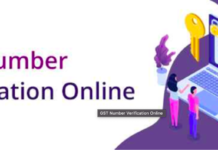Indirect tax revenue leakage has always been a headache for the government since the inception of GST.
Fake invoice generation and then claiming ineligible ITC has been a serious issue and thus causing loss of revenue to the Government.
Thus, claiming Input Tax Credit in a proper way is necessary to be compliant with the GST laws.
We will discuss the role of 4 major forms in claiming Input Tax Credit:
- GSTR-1
- GSTR-2A
- GSTR-2B
- GSTR-3B
This article shall answer a basic query amongst the taxpayers regarding which GST return form should be referred for claiming eligible Input Tax Credit
What is GSTR-2A, GSTR-2B & GSTR-3B in GST?

First thing first, let me introduce you to these 4 GST return filing forms in short.
- GSTR-1
- This form contains all the invoice details of all the outward sales a Supplier has made.
- Due date to file this return – 11th of the succeeding month.
- GSTR-1 is to be filed monthly or quarterly as per the scheme chosen by the taxpayer.
- Filing of GSTR-1 is a MUST for all the registered taxpayers except few exceptions like Composition Dealers, Input Service Distributors, etc.
2. GSTR-2A
- GSTR-2A is an auto-generated draft, which gets generated every month.
- GSTR-2A is a purchase-related tax return & is generated by the GST portal for every registered business.
- GSTR-2A of the Recipient is generated based on the GSTR-1, GSTR-5, GSTR-6, GSTR-7 & GSTR-8 of the Supplier.
3. GSTR-2B
- GSTR-2B is generated by the recipient every month as per the GSTR-1 filed by his supplier.
- GSTR-2B can be considered as a standard document for finding your eligible ITC.
- GSTR-2B can be generated on the 12th of every month.
- GSTR-2B remains static, unlike the GSTR-2A.
- Applicable to normal taxpayers, casual taxpayers as well as the Special Economic Zones (SEZs).
4. GSTR-3B
- GSTR-3B is a consolidated summary of all the outward as well as inward supplies of any registered taxpayer
- Businesses with an annual aggregate turnover of less than 5 Crore can file this GSTR-3B quarterly.
- GSTR-3B should be filled by all the registered taxpayers who are eligible to file monthly GSTR-1, GSTR-2 & GSTR-3.
As we know the basic uses of these forms, we can now find their interlinking and also determine the use of these forms in claiming Input Tax Credit under GST.
Understanding Rule 36 (4) of CGST Act, 2017

The verbatim of this rule is read as follows,
Input tax credit to be availed by a registered person in respect of invoices or debit notes, the details of which have not been uploaded by the suppliers under sub-section (1) of section 37, shall not exceed 10 % of the eligible credit available in respect of invoices or debit notes the details of which have been uploaded by the suppliers under sub-section (1) of section 37.
Do not worry; we will simplify this rule with the help of an example.
Let’s look at an example:
| SUPPLIER | RECIPIENT |
 |  |
| · Suppose, Appu the Supplier sells some goods of 1, 00,000. · He collects 18% GST from the Recipient. · Total amount collected= 1,18,000 · He files this detail of collecting 18,000 in his GSTR-1. | · As the Supplier correctly filed his GSTR-1, · Raju the recipient will get the Input Tax Credit of Rs 18,000. · These ITC details of 18,000 shall get auto-populated in his GSTR-2A & GSTR-2B. |
Now, Raju, the Recipient’s GSTR-2A & GSTR-2B will get auto-populated based on the Supplier’s GSTR-1.
So the Recipient now can avail an Input Tax Credit under GST based on his GSTR-2A & GSTR-2B.
Suppose, Raju has one more Supplier ‘GoGo’
| SUPPLIER | RECIPIENT |
 |  |
| · Service of Rs.50,000 provided to the Recipient. · 12 % GST collected from the Recipient. = 6,000 · Total amount collected = INR 56,000 · But, he has never filed GSTR-1 for this transaction. | · Supplier Gogo does not file his GSTR-1 for this transaction; hence the ITC details will NOT get reflected in the recipients GSTR-2A & GSTR–2B. · The recipient will NOT be able to avail of this ITC of INR 6,000. |
From this example, we can make certain conclusions as follows:
- Eligible ITC of Raju as per his books of Accounts:
- Eligible ITC as per books = 18,000 + 6,000 = ₹ 24,000
What is the ITC available as per GSTR-2A & GSTR-2B of the Recipient?
- ₹ 18,000 only.
- As the Supplier GoGo has NOT filed his GSTR-1, the same data is NOT reflected in the GSTR-2A & GSTR-2B of the Recipient Raju.
- Hence, his eligible ITC becomes only ₹ 18,000 & NOT ₹ 24,000
Role of GSTR-3B:
Now, the role of GSTR-3B comes into the picture.
Now, the question is how is the Recipient Raju going to avail ITC in his GSTR-3B?
In this case, Rule 36(4) of the CGST Act, 2017 tells that,
The maximum eligible ITC for the Recipient will be calculated as:
Eligible ITC auto-populated in GSTR-2B + 5% of eligible ITC
From the example, we can calculate it as follows:
Maximum Eligible ITC = ₹ 18,000 + 5% of 18,000 = 18,000 + 900 = ₹18,900
Taxpayer’s Dilemma: Should I refer GSTR-2A or GSTR-2B?

Many taxpayers are still unaware of some important facts about availing the maximum eligible Input Tax Credit.
Should I refer to my GSTR-2A or GSTR-2B for claiming Input Tax Credit, this is the most common question among the taxpayers.
Let’s continue with our previous example:
| SUPPLIER | RECIPIENT |
| · Sale of 3 Lac to the Recipient · Collects 28% GST. · Total amount collected= ₹ 3,84,000 · Files GSTR-1 after the due date (i.e. 11th of the month) · He files the GSTR1- for June’21 on 15th July’21. | · ITC details will NOT be auto-populated in Recipient’s GSTR-2B for THIS month i.e. July’21 as the supplier filed his GSTR-1 after the due date. · But since the Supplier has filed the GSTR-1 though late, the ITC details shall get auto-populated in the GSTR-2A of the Recipient for November. |
In short, When a Supplier delays his filing of GSTR-1, the following 2 things happen:
- The data of this transaction will NOT reflect in the GSTR-2B of the Recipient.
- Although the Supplier has filed his GSTR-1 returns AFTER the due date, hence, these transaction details will REFLECT into the GSTR-2A of the Recipient.
Now, with GSTR-2A you can claim the ITC of ₹ 84,000.
But, with GSTR-2B you can NOT claim the ITC of ₹ 84,000.
Now, the taxpayer is confused! Whether he should claim this ITC in GSTR-3B as per his GSTR-2A in the current month OR Input Tax Credit as per his GSTR-2B in the next month?
CBIC Clarifies
In the light of clearing this confusion, CBIC has recently cleared that in this case,
The CBIC has clarified that the Input Tax Credit MUST BE AVAILED as per the invoice details available in GSTR-2B.
The invoice details in the GSTR-2A shall not be used to avail of the ITC.
From this, we can now infer that the invoice details in your GSTR-2B shall prevail for claiming your eligible Input Tax Credit.
In Conclusion
We understood that the invoice details in your GSTR-2B should be considered as final when you are claiming Input Tax Credit.
Any discrepancies found later in the ITC availing process may attract serious implications and can also go up to suspension of your GST Registration.
Properly claiming Input Tax Credit is very important.
Failure in doing so may result in the blocking of your working capital.
Informing your GST defaulting Suppliers is a very primary task every taxpayer should do to keep the flow of the working capital in proper order.
Using an GSTR-2A Reconciliation Software can help you in claiming up to 100% of your eligible Input tax credit. This will make your task much easier and will save you a lot of time & efforts.













































